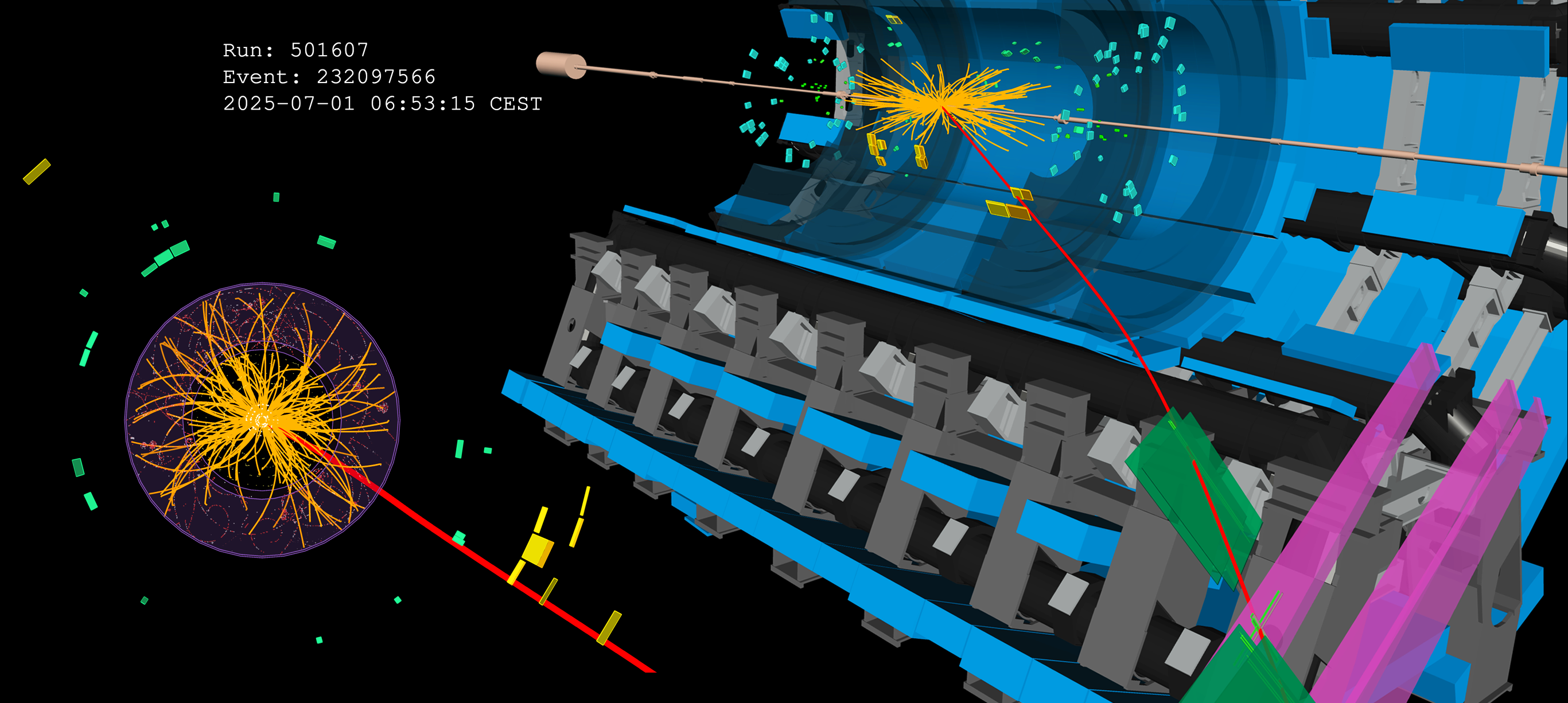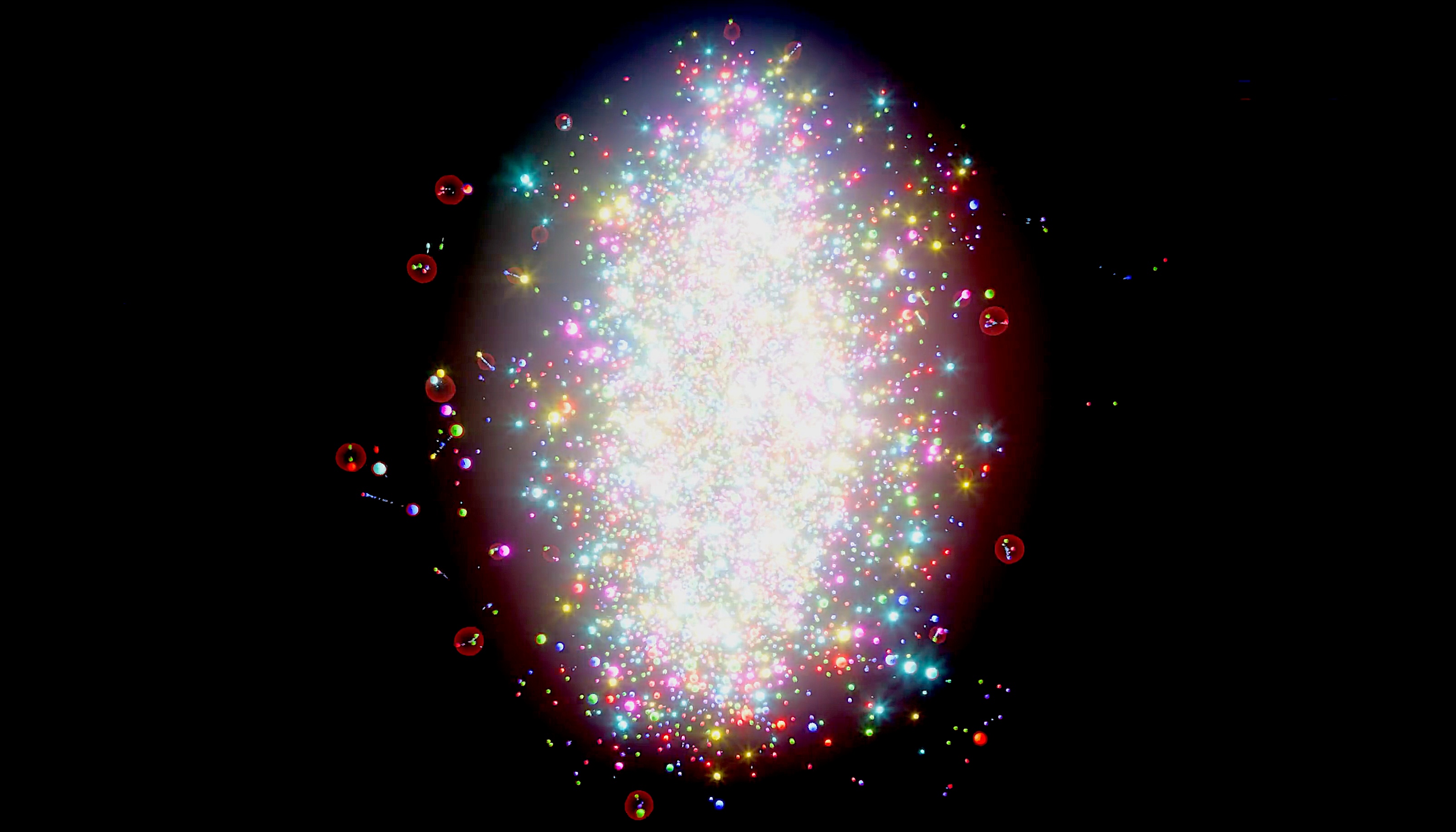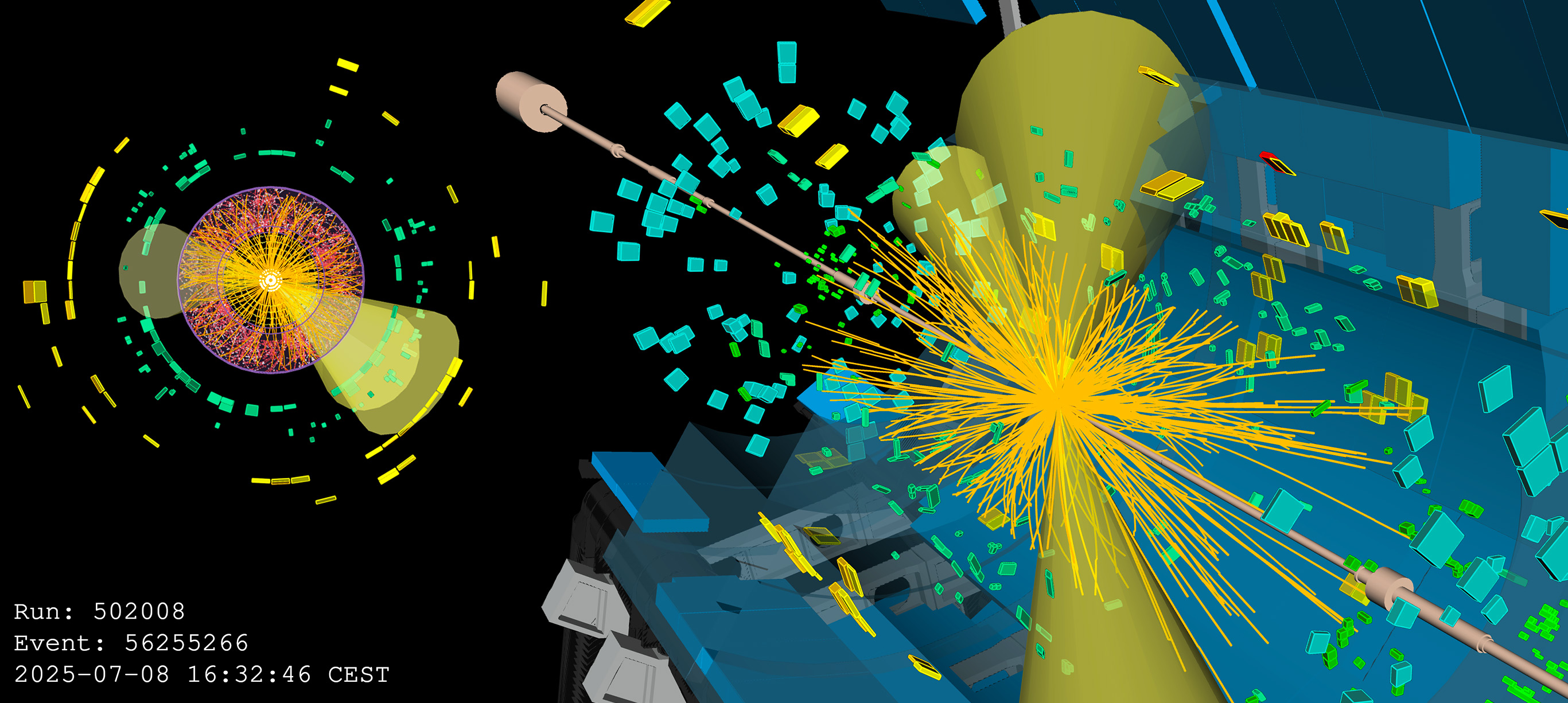ATLAS takes a breath of oxygen
1 July 2025 | By
The ATLAS Experiment at CERN dives into uncharted waters, recording its first-ever collisions of oxygen and neon ions. These are not your typical heavy-ion collisions. Oxygen and neon nuclei are far smaller than lead – the LHC’s usual candidate for ion runs – and offer physicists exciting new opportunities to study the strong force.
Though best known for its high-energy proton–proton collisions, the Large Hadron Collider (LHC) also collides heavy ions. These ions smash together to create quark-gluon plasma (QGP), a unique state of matter that existed shortly after the Big Bang. In the hot, dense state of the QGP, the strong force – which, in “cold” conditions, holds protons and neutrons together – begins to behave differently.
Lead ions, with 82 protons and 126 neutrons, have long served as the LHC’s go-to tool for generating QGP. Oxygen and neon ions, with just 8 and 10 protons and neutrons respectively, are expected to form smaller droplets of QGP when they collide, compared to those in lead collisions – offering a new pool of data for physicists to dive into.
“These collision systems will let us investigate how the properties of the QGP emerge in relation to the system size,” says Riccardo Longo, a physicist with the ATLAS heavy-ion group. “While we understand the strong force well in ‘cold’ conditions, thanks to studies of proton–proton collisions, and in extremely hot and dense environments like lead–lead collisions, the question remains: what happens in between? We hope these lighter systems will let us connect the dots between the two.”
Oxygen and neon ions, with just 8 and 10 protons and neutrons respectively, are expected to form smaller droplets of QGP compared to lead-ion collisions – offering a new pool of data for physicists to dive into.

Not too big, not too small
One of the first phenomena ATLAS physicists will be looking for is jet quenching, where high-energy particle jets lose energy as they traverse the QGP. The jets that emerge are some of the most powerful tools for studying the medium and the ATLAS experiment – purpose-built to measure high-energy jets – is uniquely suited to wield these tools.
Jet quenching was one of the ATLAS Collaboration’s first major observations in the heavy-ion domain. It was later observed in xenon–xenon collisions but – critically – not in proton–lead collisions, which form a much smaller QGP system (see Figure 1). So what’s the tipping point?
“Theory predicts we should see the onset of jet quenching in oxygen–oxygen collisions,” explains Longo. “If we observe even modest suppression, it could pin down the critical system size at which jet quenching begins.”
Interestingly, physicists have observed strong collective flow – a collective motion of particles emerging from the QGP – in collision systems of many different sizes. Even in smaller systems, where signs of energy loss by quarks and gluons have faded, evidence of QCD’s long-range, collective behaviour remains. By colliding light ions like oxygen, physicists can vary the initial conditions of the QGP’s formation, providing insight into how collective behaviour develops over space and time. The degree of collectivity may also help uncover the complex geometrical structure of oxygen nuclei, which are thought to be a composition of four alpha particles.
Neons bring a twist
Though close in size to oxygen, theorists suggest that neon ions have a bowling pin shape rather than the usual sphere (see Figure 2). This shape may impact the initial configurations of the ion collisions, providing new insights into the role of geometry in QGP formation.
“What’s even better is that the oxygen and neon runs will be right after one another,” says Qipeng Hu, ATLAS Heavy Ion Physics Group convenor. “This adds incredible value to the datasets when we do our comparison, as they’ll have exactly the same experimental conditions.”

Aiming high
The LHC will also collide oxygen ions with protons, providing an unexpected link between collider physics and cosmic rays. As high-energy particles from space hit the oxygen and nitrogen Earth’s atmosphere, they produce “cosmic ray” showers of particles that are still not fully understood. By reproducing such interactions in laboratory conditions, scientists can better understand the composition of these showers. The LHCf experiment, just downstream of the ATLAS interaction point, will use the particles produced in proton–oxygen collisions in the proton-going direction for this purpose – providing valuable input for cosmic-ray experiments like AMS, located on the International Space Station. LHCf will be aided by the ATLAS Zero Degree Calorimeter (ZDC) – also located downstream of the interaction point – which will greatly enhance detector precision when measuring near-beam neutrons.
Proton–oxygen collisions recorded by ATLAS will also provide crucial data for refining nuclear parton distribution functions (nPDFs) — theoretical inputs that describe how quarks and gluons are distributed inside a nucleus. Until now, the nPDFs for oxygen were based only on simulated data.
Studies of these collisions will advance our understanding of the strong force and help shape the future of the LHC heavy-ion programme.
All this, in just a few days
The new ion run kicks off today, 1 July 2025, and concludes just over a week later, on 9 July 2025. To make the most of this rare opportunity, the ATLAS experiment has carefully adapted its data-taking strategy to match the fast-paced schedule.
“One of our biggest challenges was working out how we could maximise our recorded data,” says Tomasz Bold, ATLAS Heavy Ion Physics Group convenor. “Working together with trigger, data acquisition and data preparation experts, we’ve managed to increase the experiment’s data bandwidth by nearly 50%. Instead of sending the collision data to the CERN Computing Centre immediately, we temporarily store it locally at the experiment during each fill, and only transfer it afterward.” To support this, they also developed new event-selection protocols (“triggers”) that carefully balance the search for rare physics signals with the need to keep an unbiased sample of events.
Another key preparation for this run was the installation of the ZDC. The ZDC measures neutral particles that emerge close to the beamline, particularly “spectator neutrons” originating from the evaporation of the non-overlapping regions of the colliding nuclei. For proton–oxygen and oxygen–oxygen data-taking, the ZDC will play a particularly important role in monitoring the beam composition in real time. By analysing the evolution of newly implemented ZDC triggers corresponding to different neutron topologies, experts will be able to estimate any beam contamination due to transmutation and adjust data-taking on the fly.
Getting it right matters. The data gathered during this brief run has the potential to impact the heavy-ion community for years to come. “This special run is a great example of how different physics communities can benefit from the unique flexibility of the LHC,” concludes Longo. “From heavy-ion to cosmic-ray physicists, there is deep and diverse physics potential in these data. Studies of these collisions will advance our understanding of the strong force and help shape the future of the LHC heavy-ion programme.”
Learn more
- First-ever collisions of oxygen at the LHC, CERN News, 1 July 2025
- The unexpected uses of a bowling pin: exploiting 20Ne isotopes for precision characterizations of collectivity in small systems (Giacalone et al., arXiv:2402.05995)



